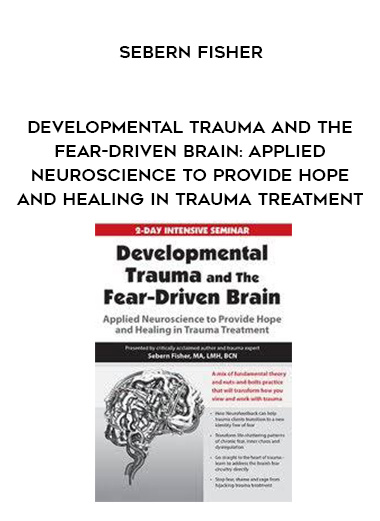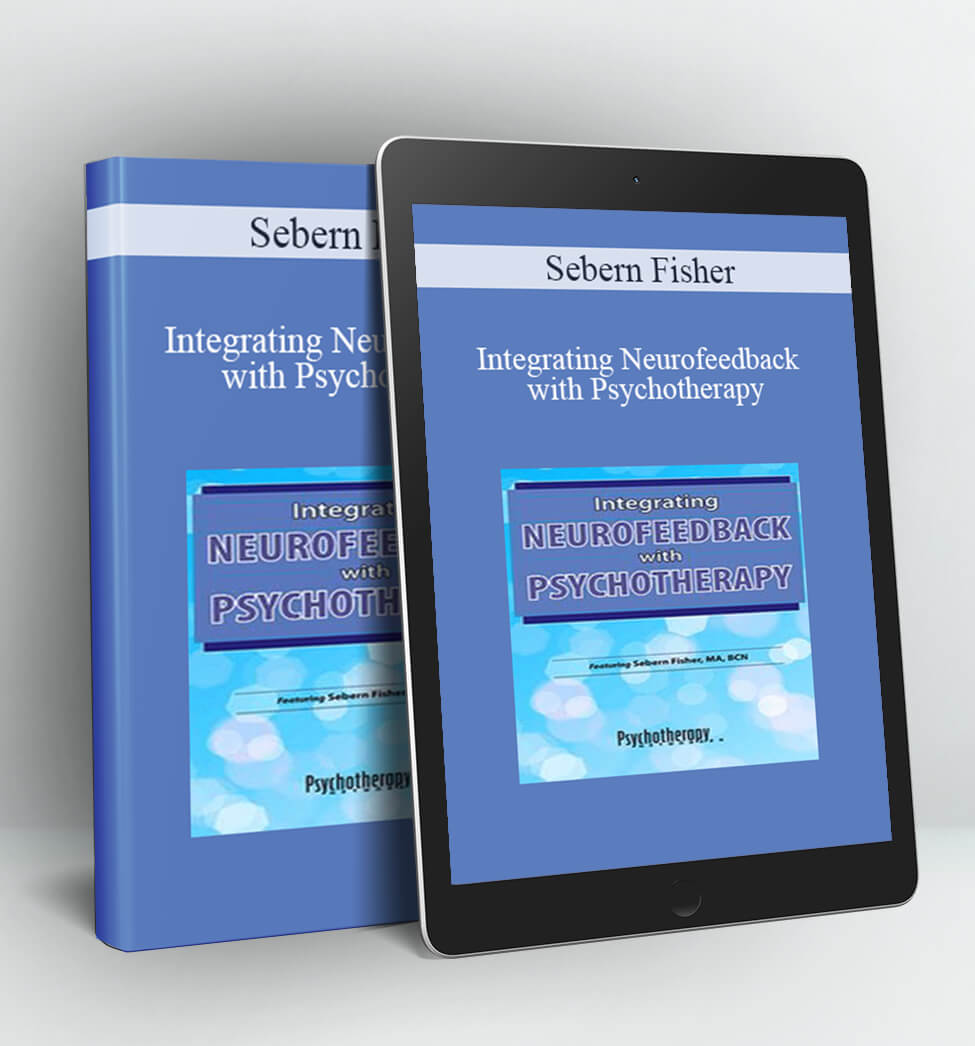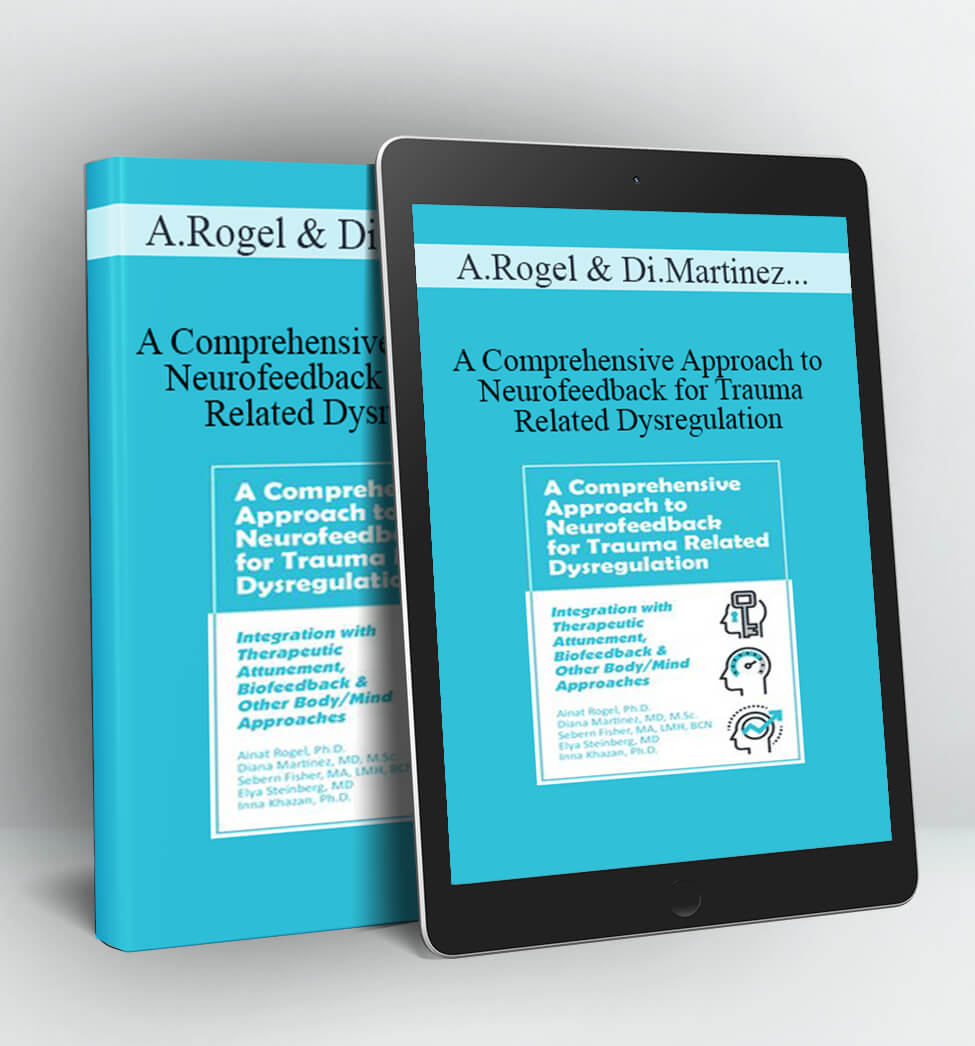DEVELOPMENTAL TRAUMA AND THE FEAR-DRIVEN BRAIN: APPLIED NEUROSCIENCE TO PROVIDE HOPE AND HEALING IN TRAUMA TREATMENT – SEBERN FISHER
You’ve looked into the eyes of traumatized clients and seen absolute fear. For you, working with trauma isn’t about a paycheck.
You care about outcomes.
Abuse, abandonment, neglect and violent trauma. Experienced at an early stage of development, it sets up a life-shattering pattern of chronic fear, inner chaos and dysregulation. It disrupts the development of the brain, disorders the capacity for attachment, and distorts your clients’ relationships with themselves and others.
In therapy, an over-active amygdala sets off the stress response again and again, keeping clients from making real progress in traditional talk-based therapies. Without addressing the brain’s fear circuitry directly, therapeutic progress can prove elusive.
Sebern Fisher “gets” trauma. She knows what the fear-driven brain is all about. And insights and guidance from her groundbreaking work in the field of trauma and neurofeedback can provide you with a whole new paradigm to achieve the positive treatment outcomes you want for your clients.
In his foreword to Dr. Fisher’s critically acclaimed book Neurofeedback in the Treatment of Developmental Trauma, internationally recognized trauma expert Bessel van der Kolk, MD praises Fisher as “an immensely experienced neurofeedback practitioner [and] the right person to teach us how to integrate it into clinical practice.”
Watch Sebern and take your potential for healing to a new level as she profoundly effects the way you view the operation of the human mind and the possibilities that exist for effective treatment options in the remedy of attachment disorders and trauma!
Give the possibility of hope and healing to traumatized clients.
This recording is a unique opportunity to learn from this best-selling author and internationally recognized expert on the use of neurofeedback in the treatment of developmental trauma!
- Establish how the multiple layers of connectivity between brain, body and self inform the clinical approach to trauma.
- Assess how childhood trauma changes the developmental trajectory of the brain and explore the clinical manifestations of these impacts.
- Articulate how insecure attachment at an early age can create a baseline of survival fear.
- Specify how clinicians can help clients see emotional states for what they are: temporary.
- Characterize the role of the nervous system and hyperarousal in trauma symptomology.
- Communicate the role of affect regulation in therapeutic effectiveness.
- Support how limbically driven emotions like fear and rage can impede the therapeutic process.
- Assess the impact of transference on the therapeutic bond and communicate how clinicians can minimize intense transference.
- Characterize how working with brain dynamics can relieve trauma without making clients actively re-experience the trauma.
- Articulate how an EEG can be used to identify maladaptive patterns of firing.
- Explore the process of inhibiting and rewarding frequencies associated with anxiety and over-arousal in neurofeedback training.
- Specify ways in which clinicians can help clients whose lives have been defined by fear transition to a new identity as fear subsides.
Insecure Attachment and Developmental Trauma
- Neuronal patterns of PTSD
- The innate potential for relationship
- Unrepaired attachment disruption
- The inheritance of insecure attachment – the state of baseline survival fear
- Long-term consequences – void of self
The Fear-Driven Brain: Adverse Childhood Experiences and Trauma
- The traumatized brain
- The autonomic and central nervous systems
- The brainstem and hypothalamus
- The cerebellum, hemispheres and lobes of the brain
- Neurodevelopmental consequences
- Impaired brain development
- Impaired emotional regulation and impulse control
- Dysregulated stress response
- Alterations in physical growth
- Telomeres and cellular aging
- The firing and misfiring of neural networks
- Parasympathetic Nervous System shutdown and the vagal nerve
- Polyvagal Theory in trauma practice – Porges
- The role of glial cells
- Accessing brain plasticity
Arousal, Reactivity, and Affect Dysregulation in Trauma
- Overarousal and affect dysregulation
- Primary, sub-cortical and right hemisphere affects
- The inherent limits of talk therapy
- Chronic baseline fear and self-reflection
- The role of affect regulation in therapeutic effectiveness
Stop Letting Fear, Shame and Rage Hijack Trauma Treatment
- Shortcomings of medication
- The relationship between fear and shame
- Cognition in “survival mode”
- Manifestations of limbically driven emotions
- Neurofeedback and the pulses of fear, shame and rage
Fear as the Core of Transference: Handle Transference and Counter-Transference Issues
- Critical interpersonal dynamics – a partnership in affect regulation
- Impacts on the therapeutic bond
- Minimize intense transference
- Cultivate presence and attunement
- Neurofeedback and quieting the alarm of abandonment
Neurofeedback as Applied Neuroscience in Psychotherapy: Essentials and Assessment
- The risks of treatment
- Shift the burden of affect regulation from the therapist to the training
- A new experience of homeostasis
- Firing, frequencies, and arousal
- Strengthen circuits
- State dependence – fear states dysregulate
- States to traits
Quiet Fear with Neurofeedback: Integrate Neurofeedback into Trauma Treatment
- When to talk and when to train
- Clinical assessment for neurofeedback
- Attention, anxiety, depression, etc.
- Considerations regarding sexuality and medication
- Work with sensors, placements
- Identify maladaptive patterns of neuronal firing
- Using EEG – frequencies and amplitudes
- Adjust function – operant conditioning of brain waves
- Feedback – change the frequencies attributed to over-arousal
- Inhibit frequencies you want less of
- Reward frequencies you want more of
- Reward disconnected areas to connect or overly connected parts to disconnect
- When training plateaus – lack of progress is not resistance
- How do you know when training is over?
Who Will I Be When I’m Not Afraid: Working with the Fear-Bound Identity
- A trauma identity inextricably bound to fear
- The healing paradox
- Treatment challenges when fear begins to quiet
- Transition clients to an unfamiliar identity
- Integration of new state, new traits and new sense of self
Tag: Developmental Trauma and The Fear-Driven Brain: Applied Neuroscience to Provide Hope and Healing in Trauma Treatment – Sebern Fisher Review. Developmental Trauma and The Fear-Driven Brain: Applied Neuroscience to Provide Hope and Healing in Trauma Treatment – Sebern Fisher download. Developmental Trauma and The Fear-Driven Brain: Applied Neuroscience to Provide Hope and Healing in Trauma Treatment – Sebern Fisher discount.






